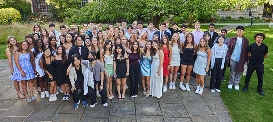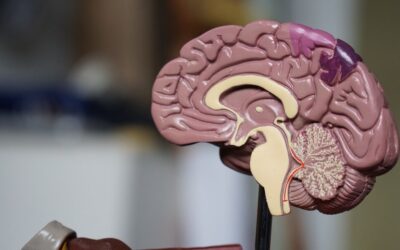Would you believe me if I told you that the two halves of your brain know different things about the world: that they have different beliefs, abilities and even personalities?
Many top psychology books discuss the widely held misconception that logical people are ‘left brained’ and artsy people are ‘right brained’. This isn’t quite the case. However, it is true that the left and right halves of the brain are specialised for carrying out different tasks. For instance, while the left brain is more aligned with linguistic tasks, the right brain excels in functions like spatial mapping. And, when separated, they seem to act like two very distinct individuals.
History of split-brain research
In the sixties, patients with severe epilepsy were treated with a controversial procedure. The corpus callosum, which joins the two hemispheres (halves) of the brain and allows them to communicate, was severed. This worked: it cured their epilepsy. And, surprisingly, this did not seem to have an obvious effect on the patients’ lives.
Split-brain experiment pioneers: Roger Sperry and Michael Gazzaniga
Roger Sperry and Michael Gazzaniga carried out many experiments with these split-brain patients. They presented stimuli to each hemisphere separately and at the same time. They achieved this by showing things to only their left visual field (LVF) or right visual field (RVF). A stimulus presented to the LVF is processed by the right hemisphere, and stimulus presented to the RVF is processed by the left hemisphere.
The left-right visual field tests
In one of these famous psychology experiments, patients were simply asked to say words presented to them. When a word was processed by the left hemisphere, they could say what it was. However, when it was processed by the right hemisphere, they stated that there was nothing. This is because the right hemisphere cannot process language and so was not even able to recognise that the word was there!
This was the first sign that we rely on the left hemisphere for our consciousness: without language, the right seemed to lack this ability.
Discovering the left brain interpreter
Then, in 1978, Michael Gazzaniga and Joseph DeLoux, discovered a phenomenon that they named the ‘Left Brain Interpreter’.
In that same experimental setup, they showed images to each hemisphere simultaneously.
They then asked the patients to select the corresponding pictures from a selection, using their left and right hands (the left half of the brain controls the right half of the body and vice versa). For example, patients were presented with a snow shovel to the right hemisphere and a chicken head to the left hemisphere. They were able to correctly select both the pictures of a chicken head with their right hand and snow shovel with their left hand.
The interesting discovery came when patients were asked why they had made those selections.
Just as before, they were unable to say they had seen the snow shovel with their right hemisphere – yet they still picked it. One patient explained this choice of pictures by saying: “The chicken claw goes with the chicken head, and you need a snow shovel to clean out the chicken shed”. This answer seems strange to you and me because our hemispheres can communicate. But, this person has no knowledge of the shovel in their left hemisphere! So, the left invented an explanation for the actions of the right hemisphere.
Implications and anomalies of split brain experiments
From this, it seems that the left hemisphere is responsible for our conscious interpretation of the world.
But the right still has its own interpretation. Does this mean that they are each separate ‘people’?
Alien hand syndrome and dual consciousness
One interesting phenomenon suggests this is Alien Hand Syndrome. This was a symptom in some patients with the split-brain surgery. It is a rare disorder which can also affect patients with other types of brain damage, such as stroke patients. People with this syndrome have a hand which they cannot control – and which seems to have a mind of its own. This hand interferes with what their other hand is trying to do.
For example, if the hand in control is unbuttoning a shirt, patients reported the other hand redoing the buttons.
This may be a sign that each hemisphere has its own consciousness.
Impact of hemisphere loss
So, if the hemispheres are two different people, could someone survive with only one hemisphere? The answer to this is both yes and no.
As we have seen, the hemispheres have different abilities and even intentions. Because of this, losing a hemisphere in adulthood (after these abilities have developed) causes significant problems. For example, even a small amount damage to areas in the left hemisphere can lead to difficulties in understanding or using language.
Adult vs child brain adaptability
But, if a hemisphere is lost at a young age, then it actually has very few noticeable effects.
In these cases, the other hemisphere is often able to take on the functions of the missing one. Patient EB had his left hemisphere removed at the age of two. When older, he was capable of almost normal language (with some subtle grammatical errors). Of course, it is difficult to study this as very few people have this much brain damage.
Delving deeper into psychology and consciousness
And so – the question remains: are there actually two people in our brain? Can each hemisphere have its own consciousness? If such topics intrigue you, then you’re not alone. Take your passion for understanding the human mind to the next level with Oxford Scholastica Academy’s Neuroscience summer courses for teens. Dive into the world of psychology, explore exciting theories, and maybe even find answers to these perplexing questions. Join us this summer and embark on an intellectual journey like no other!





